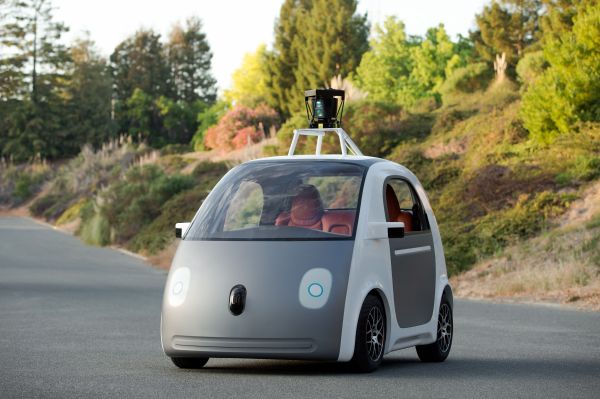In what is sure to be seen by some as government interference and general misunderstanding of technology, the California Department of Motor Vehicles has released a proposal that would require drivers to be present in self-driving vehicles in the state.
That limits any possibility for parents to send their kids off alone, any delivery services hoping to utilize autonomous vehicles without paying human workers and future designs Uber might have to deploy cars to pick up riders, sans “driver-partners” in California.
It’s also caused some disappointment at Google, which has been testing driverless cars for a couple of years in the state of California.
“In developing vehicles that can take anyone from A to B at the push of a button, we’re hoping to transform mobility for millions of people, whether by reducing the 94 percent of accidents caused by human error or bringing everyday destinations within reach of those who might otherwise be excluded by their inability to drive a car. Safety is our highest priority and primary motivator as we do this. We’re gravely disappointed that California is already writing a ceiling on the potential for fully self-driving cars to help all of us who live here,” Google said in an emailed statement to TechCrunch.
Despite Google’s dismay, the regulation might be a good thing in the long-run. Even with the high safety rate, we are sure to run into unforeseen scenarios without a unified and open-source driverless car codebase shared by all driverless car manufacturers – something we don’t presently have.
Consider this scenario – a human driven car starts heading the wrong way on the freeway and is barreling toward two autonomous vehicles. The lane is fairly narrow; if one of the cars slows and gets behind the other, they’ll both be fine. But without a shared, open codebase there are no rules to determine which one should slow down. If they both speed up, neither can pass the other. If both slow down, same problem.
This and many other scenarios we can’t yet dream up are sure to emerge as more of these vehicles get onto the road. The government is right to not immediately trust new technology to just work and some sort of a frame of regulation is needed to ensure our safety and security.
Senate Bill 1298 seems to at least try to attempt it. The proposal comes in two parts. The first is to establish “certain vehicle equipment requirements, equipment performance standards, safety certifications, and any other matters the department concludes is necessary to ensure the safe operation of autonomous vehicles on public roads, with or without the presence of a driver inside the vehicle.”
The second is causing some consternation for driverless car manufacturers like Google. This part of the proposal requires people to operate their autonomous cars. Google and other driverless car manufacturers would also need to put their vehicles through a third-party safety test and provide measures to report accidents or car software hacks.
Tesla and Ford also hold permits to test driverless cars in California and this regulation would theoretically affect any plans they may have to sell these types of cars to the public as well.
Should the proposed bill go through it could slow down progress in the state of California and cause manufacturers of these types of vehicles to move on to other locations, leaving the Golden State behind. But it probably won’t be the last word in California or elsewhere as we try to define and work with this new technology.
